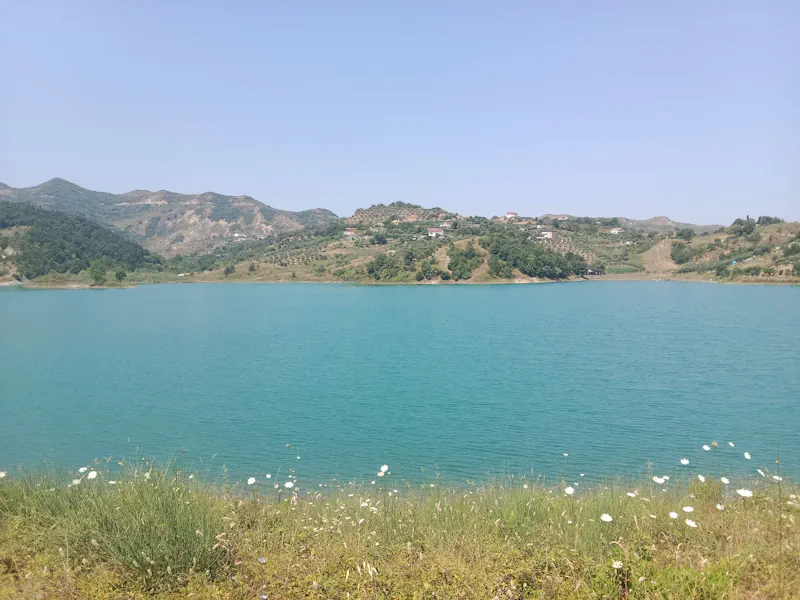Built on a hill 277 meters high, Preza Castle offers a clear view of the Tirana Plain. In medieval times, this castle served as a strategic point for observing important economic and military routes between Durrës and Tirana. Although the exact period of its construction is not known, the castle bears traces of four different construction phases. The most recent phase includes the construction of the clock tower in the 19th century, the clock and bells of which are currently in Austria. During its functional period, the castle also served as a communication point with other important castles in the area, such as those of Kruja, Lezha, Ishmi, and Petrela, through fire signals. Near the castle lived the Illyrian tribe of the Parthini, suggesting that this place may have been part of the conflict between Caesar and Pompey. In addition to its military and economic significance, Preza Castle also has special cultural value, as it is thought to be the place where Donika Kastrioti, the sister of the Albanian national hero Gjergj Kastrioti Skanderbeg, married Muzak Topia.
Welcome to Vorë!
Focus

Located in the village of Gjoka in Vora, Gjoka Lake and its island remain an undiscovered destination for many people. Despite the slightly challenging terrain, walks along the shore, picnics under the shade of trees, and relaxing by the water are some of the activities that can be enjoyed in this place. Its proximity to the capital makes it a good choice for those who want to escape the noise and fast pace of the city.
Focus

The toponyms of Vora and its surrounding areas are present in several well-known songs of Central Albania. These songs often express love and a strong connection to the homeland and its characteristics. In the song "Preza" by Durim Shamku, Preza is mentioned and the beauty and blessing of this area are praised:
Oh, how blessed you are
May we be grateful to the great God
Whoever has passed through Preza
Will die with a clear conscience
In the song "Amon" by Armand Trebicka and Artiola Toska, Vora is mentioned as a symbolic border of Tirana, the capital, where the protagonist expresses her determination not to leave Tirana beyond Vora:
I have given you my heart
(come on girl, come on)
I will not regret this
(oh, the treasure of Tirana)
But where you want to take me
The wind of Dajti does not blow for me
I tell you, and I won't change my mind
I won't go further than Vora
(I won't go further than Vora)
These songs reflect the feelings and traditions of the people of this area, emphasizing the importance of toponyms in their culture and identity.
Focus
In every meal in Preza, it is impossible not to smell the aroma of olives and olive oil. Due to the large presence of olive groves in this area, olives and their oil are present in every local dish, from fresh salads to side dishes and main courses.
Stuffed grape leaves, or yaprak, are a traditional dish widely known on tables in Central Albania. In the Vora area, this dish takes on a special character by using wild cabbages. The cabbages are finely chopped and mixed with onions, garlic, and a combination of local herbs and plants such as sorrel, dock, parsley, dill, and mint. Olive oil, salt, and pepper are added to the filling, which is then carefully wrapped in grape leaves. The yaprak is slowly cooked in a pot of water until ready and is served with lemon juice for a fresher taste. This dish is easily found in traditional restaurants and is an excellent choice for anyone wanting to enjoy the oriental cuisine of Central Albania.
Byrek, a form of pie is one of the most beloved traditional Albanian foods with oriental origins. One of its many variations, the milk pie with baked layers, is made from a mixture of milk, cheese, butter, eggs, and baking soda, which is combined with crumbled baked layers. This creamy mixture is placed between two layers of baked dough and baked in the oven until golden and shiny. The milk pie is served warm, usually accompanied by fresh yogurt, a typical traditional Albanian meal.
For many people, the idea of a dessert made with meat broth might seem unusual, but kabunia uses exactly this in its recipe. Kabunia is made with rice fried in butter and broth from lamb neck. After the rice has cooked, caramelized sugar, raisins, cinnamon, cloves, and a bit of salt are added. With a somewhat unusual recipe and a combination of sweet and savory flavors, kabunia remains a unique dessert in the culinary tradition of Central Albania.


